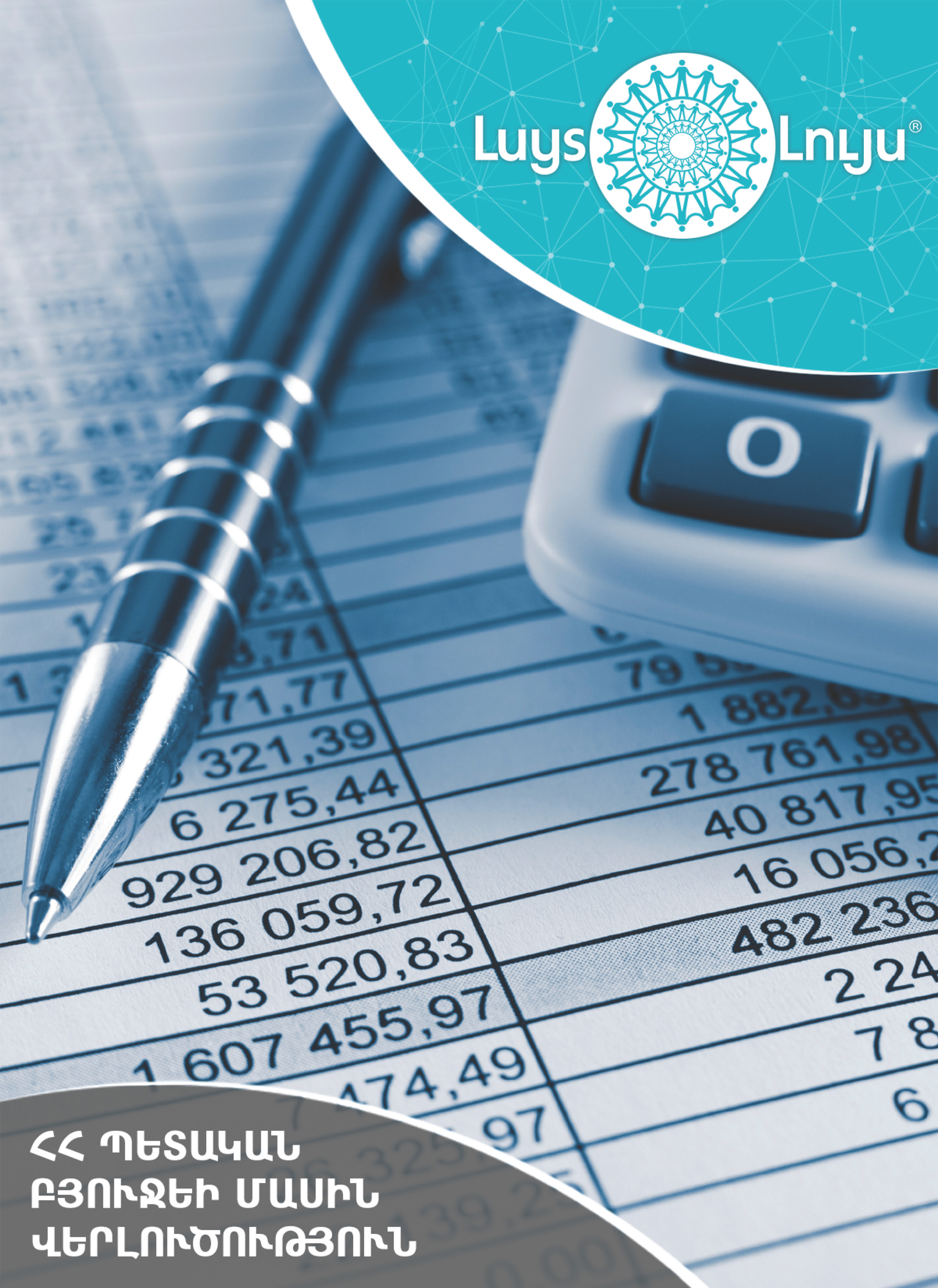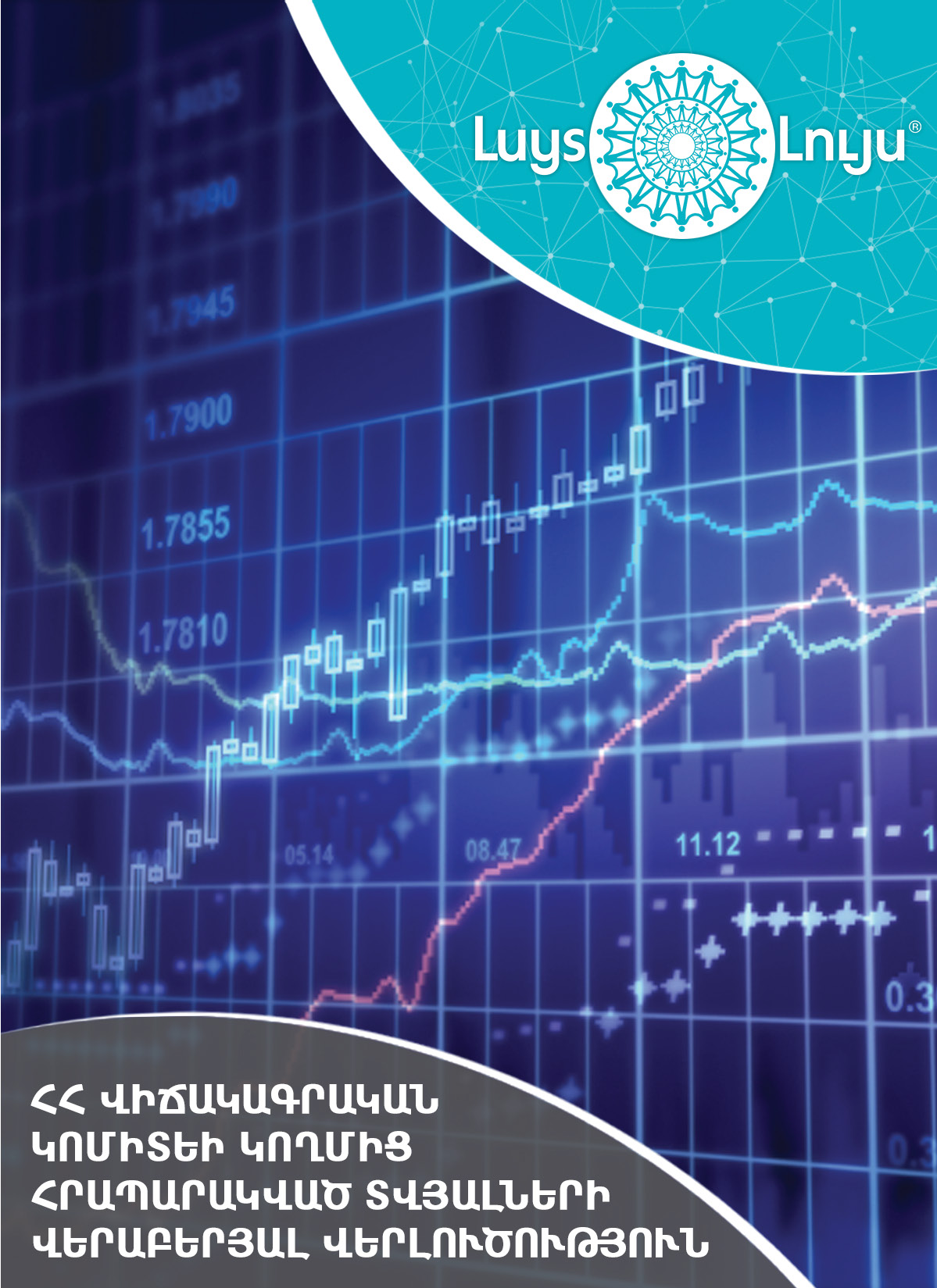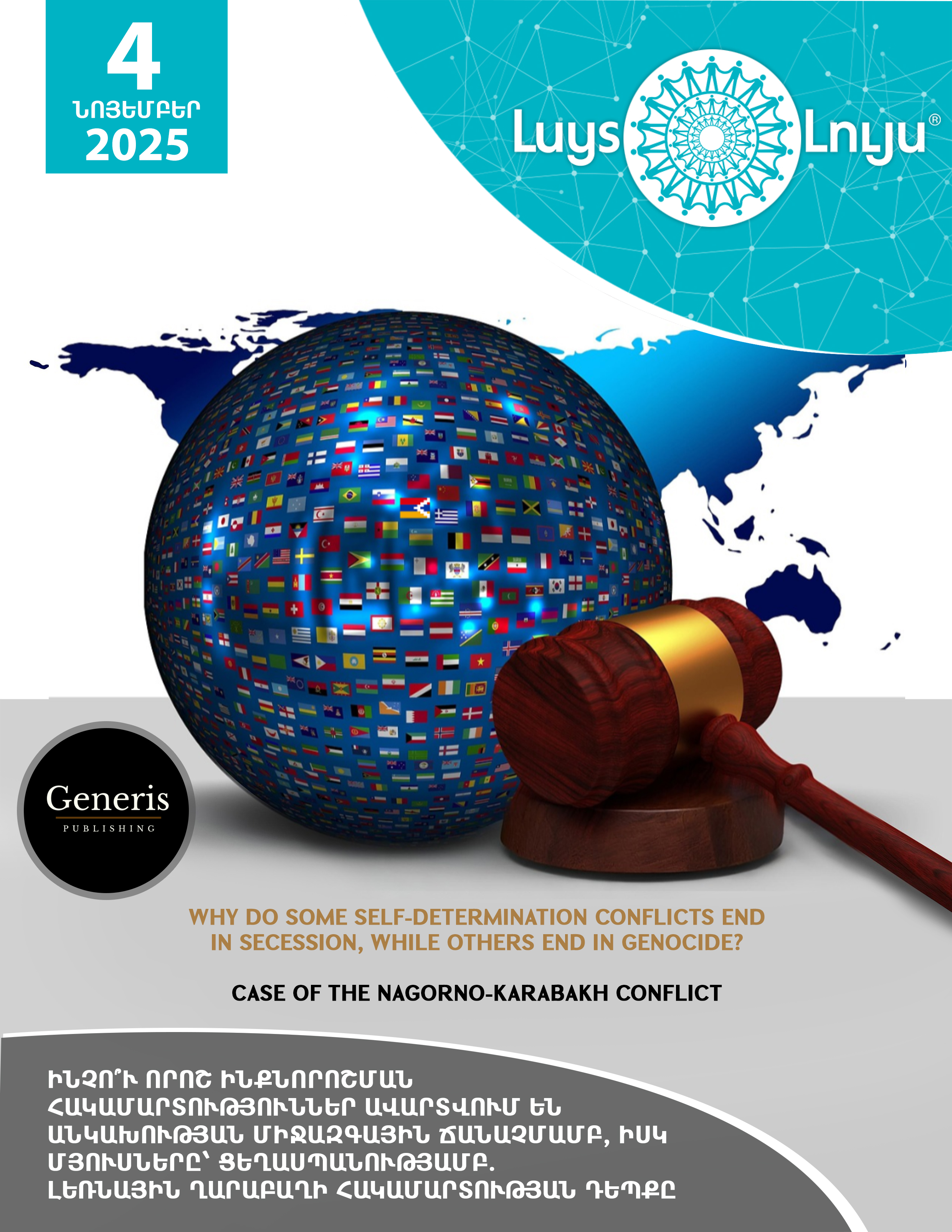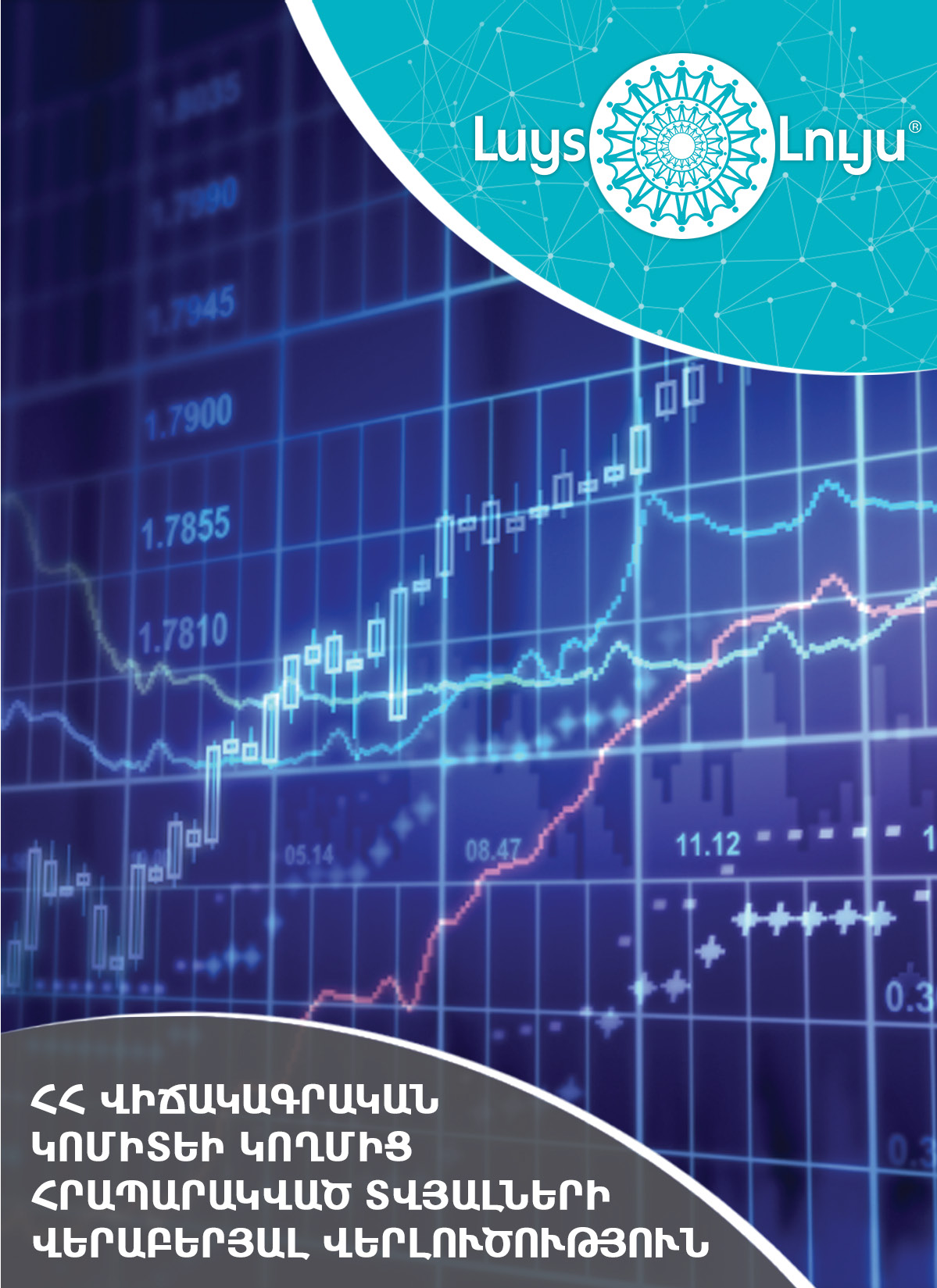 A study on the execution report of the state budget of the RA for the first nine months of 2025
A study on the execution report of the state budget of the RA for the first nine months of 2025
The objective of the present analysis is to assess the execution of the state budget of the RA in the given period. First, we describe the general state of the economy of the RA, namely the driving forces of economic activity, the developments in individual sectors of the economy, the behavior of the components of the demand – consumption and investment – and so on. Afterwards, we analyze the performance of government revenues and expenditures by comparing the actual and planned values of the respective indicators. We conclude the analysis by summarizing the main observations and results. Full material is only available in Armenian․
 Clumsy manipulations or the mountain gave birth to a mouse. Self-destruction documents published by the government
Clumsy manipulations or the mountain gave birth to a mouse. Self-destruction documents published by the government
Representatives of the government formed in Armenia after the unconstitutional change of power in 2018, trying to refute the successes achieved by Armenian sides in the settlement of the Nagorno-Karabakh conflict, made various statements, promising to publish documents confirming the authenticity of their claims. To this end, on December 2nd, 13 materials were posted on the government website under the heading “Documents of the negotiation process on the settlement of the Nagorno Karabakh conflict,” including 5 negotiation documents drafted from 2007 to 2019. The article presents 10 of the most problematic statements made by the head of government, and proves that they have no documentary basis, are false, and both these statements and the publication of the package on the government's website were intended to mislead the public, create a false impression about the settlement process of the Nagorno Karabakh conflict and the status of Artsakh stipulated in the documents during this process. After the publication, a number of new false claims were made, indicating a lack of knowledge about negotiation processes. All the statements, both old and new, indicate a lack of understanding of the negotiation process and the documents presented in the package indicate the opposite. The negotiation documents formed starting in 2007 (after the introduction of the principle of self-determination into the basis of the negotiation document) until 2018, as well as the document submitted by the OSCE Minsk Group Co-Chairs to the current authorities in 2019, which did not differ from the document of 2016, unequivocally fixed the settlement scheme ensuring the independence of Artsakh and international recognition through the free expression of the will of the people of Nagorno Karabakh. These documents also show that draft Declarations on the settlement of the conflict, Statements by the Co-Chairs and Resolutions of the UN Security Council were prepared, which proved the proximity of their application, but this was not implemented due to the disruption of the settlement process by the current Armenian authorities. Full material is only available in Armenian.
 Reference on the state budget of the RA of 2026
Reference on the state budget of the RA of 2026
The present analysis is devoted to the investigation of the key aspects of the state budget of the RA. First, we consider the projections of macroeconomic variables forming the basis of the budget, then we analyse the planned values of parameters of the general and central budget of the RA. We pay particular attention to the comparison of the planned values of revenues and expenditures with the actual levels observed in previous years. In the end we make conclusions in order to assess whether the budget addresses the problems that exist in the RA. Full material is only available in Armenian.
 The social-economic developments in the economy of the RA for January-October 2025
The social-economic developments in the economy of the RA for January-October 2025
In the present analysis, given the data published by the Statistical Committee of the RA, we study the recent social-economic developments in the economy of the RA. In particular, we consider the cumulative indicator of economic activity of the given month, its sectoral distribution, as well as the dynamics of individual sectors of the economy. We also analyze economic developments in the foreign trade, labour market and fiscal system of the RA. In addition, some aspects of the financial system (inflation, deposits and loans), as well as the behaviour of the exchange rate, are touched upon. Full material is only available in Armenian.
 Why do Some Self-determination Conflicts End in Secession, while Others End in Genocide? Case of the Nagorno-Karabakh conflict
Why do Some Self-determination Conflicts End in Secession, while Others End in Genocide? Case of the Nagorno-Karabakh conflict
The monograph presents the results of an interdisciplinary study on the significant impact of geopolitical transformations on settlement of ethno-political conflicts based on international law. One of the most typical cases is the Nagorno-Karabakh conflict and its resolution process. After the power change in Armenia in 2018, the normal process of resolving this conflict within the framework of basic principles of international law was replaced by sharp shocks yielding to the logic of escalated geopolitical confrontation between West and Russia. This undermined the mediation efforts of the OSCE Minsk Group countries (France, Russia, USA), leaving only two options for conflict resolution: the realization of self-determination rights with the support of international community or genocide of people of Nagorno-Karabakh. A comparative analysis of the processes of resolving self-determination conflicts (East Timor, Kosovo, Nagorno-Karabakh) at various stages of formation of the new world order is carried out. Threats of catastrophic developments due to changes in positions of influential actors regarding conflict resolution are considered under the influence of geopolitical transformations. The possibility of preventing such developments is also considered. Full material is only available in Armenian.
 The social-economic developments in the economy of the RA for January-September 2025
The social-economic developments in the economy of the RA for January-September 2025
In the present analysis, given the data published by the Statistical Committee of the RA, we study the recent social-economic developments in the economy of the RA. In particular, we consider the cumulative indicator of economic activity of the given month, its sectoral distribution, as well as the dynamics of individual sectors of the economy. We also analyze economic developments in the foreign trade, labour market and fiscal system of the RA. In addition, some aspects of the financial system (inflation, deposits and loans), as well as the behaviour of the exchange rate, are touched upon. Full material is only available in Armenian.
 Ararat or Aragats?
Ararat or Aragats?
The reinterpretation of Armenia’s national symbols and the consolidation of society around them are essential not only for preserving the country’s national identity but also for ensuring its vitality. However, the current political approach, which is fundamentally the opposite, endangers this process by diminishing the potential of national identity and hindering its strengthening. In this context, pseudo-discourses such as “Ararat or Aragats?” are particularly dangerous, as they contribute to the polarization of society. The contradictions that arise around these symbols are often used not to unite, but to create dividing lines. This undermines national cohesion by weakening the connection between state institutions and society. The effect is especially evident in the political sphere, where the manipulation of national symbols is used for short-term gains without considering the long-term consequences. As a result, instead of becoming a foundation for national unity, the symbols turn into a source of division. Full material is only available in Armenian.
 The social-economic developments in the economy of the RA for January-August 2025
The social-economic developments in the economy of the RA for January-August 2025
In the present analysis, given the data published by the Statistical Committee of the RA, we study the recent social-economic developments in the economy of the RA. In particular, we consider the cumulative indicator of economic activity of the given month, its sectoral distribution, as well as the dynamics of individual sectors of the economy. We also analyze economic developments in the foreign trade, labour market and fiscal system of the RA. In addition, some aspects of the financial system (inflation, deposits and loans), as well as the behaviour of the exchange rate, are touched upon. Full material is only available in Armenian.
 An applied study of the Japanese experience in overcoming the national identity crisis.
An applied study of the Japanese experience in overcoming the national identity crisis.
The evaluation and interpretation of the past, and the study of the experiences of countries and peoples who have faced various tragic situations, gain particular significance during turning points of history and times of crisis. When faced with entirely new realities, challenges, and crises that differ from the past, nations have often sought the roots of existing problems and the keys to overcoming them through the evaluation and interpretation of historical experiences - their own or others’.
The tragic surrender and capitulation in World War II was an unprecedented event in the lives of the Japanese people, which led to a profound transformation in their ethnic identity. The Japanese of yesterday began to no longer recognize themselves finding themselves in a deep identity crisis.
This study offers a detailed examination of the identity crisis among postwar Japanese and their successful attempts to overcome. Particularly those aspects of the crisis that are comparable to the identity crisis the Armenian people face today. Full material is only available in Armenian.
 An applied study of the Japanese experience in overcoming the national identity crisis
An applied study of the Japanese experience in overcoming the national identity crisis
The evaluation and interpretation of the past, and the study of the experiences of countries and peoples who have faced various tragic situations, gain particular significance during turning points of history and times of crisis. When faced with entirely new realities, challenges, and crises that differ from the past, nations have often sought the roots of existing problems and the keys to overcoming them through the evaluation and interpretation of historical experiences - their own or others’.
The tragic surrender and capitulation in World War II was an unprecedented event in the lives of the Japanese people, which led to a profound transformation in their ethnic identity. The Japanese of yesterday began to no longer recognize themselves finding themselves in a deep identity crisis.
This study offers a detailed examination of the identity crisis among postwar Japanese and their successful attempts to overcome. Particularly those aspects of the crisis that are comparable to the identity crisis the Armenian people face today. Full material is only available in Armenian.